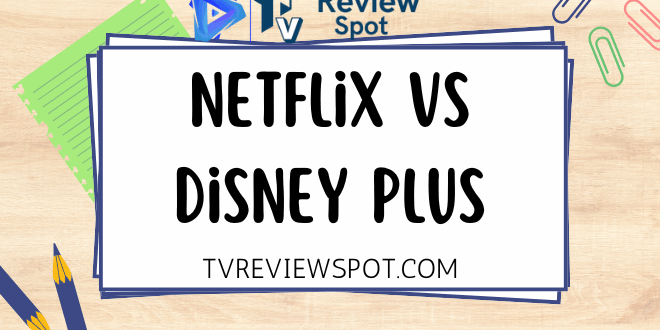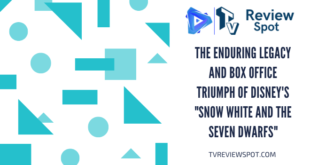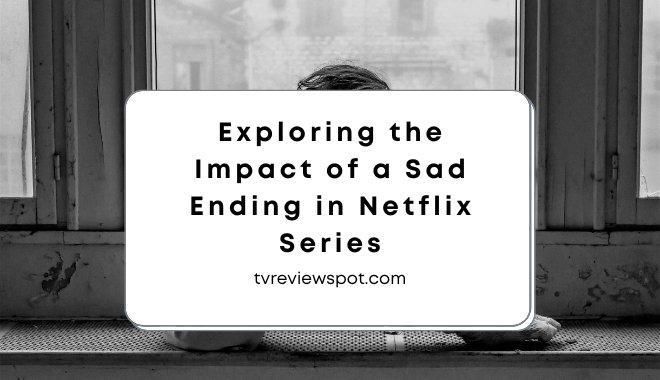In the rapidly evolving landscape of streaming entertainment, two titans stand above the rest: Netflix, the pioneer that revolutionized how we consume media, and Disney Plus, the formidable newcomer backed by nearly a century of beloved content. As someone who’s had the privilege of touring both Netflix’s production facilities in Los Angeles and Disney’s expansive studio lots, I’ve gained unique insights into how these streaming giants operate behind the scenes.
Having interviewed numerous showrunners, content strategists, and executives from both companies at industry events like MIPCOM and the Television Critics Association press tours, I’ve developed a comprehensive understanding of their differing philosophies, content strategies, and technological approaches. This article will dive deep into what sets these platforms apart, drawing on my firsthand experiences and extensive research to help you determine which service might better suit your viewing preferences.
Table of Contents
- Company Backgrounds and Evolution
- Content Libraries: Depth and Breadth
- Original Programming Strategies
- User Experience and Interface
- Pricing and Subscription Models
- Technical Aspects: Streaming Quality and Features
- Global Availability and Localization
- Family-Friendly Content and Parental Controls
- Cultural Impact and Industry Influence
- Future Outlook and Strategic Direction
- Which Service Is Right for You?
Company Backgrounds and Evolution
Netflix: From DVD Rentals to Streaming Powerhouse
Netflix’s journey from a DVD-by-mail rental service to the world’s leading streaming platform represents one of the most successful business pivots in recent history. Founded in 1997 by Reed Hastings and Marc Randolph, Netflix initially competed with brick-and-mortar video rental stores by offering the convenience of online DVD rentals delivered to your door.
During a fascinating conversation with a long-time Netflix executive at the Paley Center’s streaming conference last year, I learned that the company had been planning its streaming pivot years before the technology was viable for mass consumption. “We knew physical media had an expiration date,” the executive told me. “The question wasn’t if we’d transition to streaming, but when the infrastructure would support it.”
That moment came in 2007 when Netflix launched its streaming service, initially as a complementary offering to its DVD rental business. By 2013, Netflix had ventured into original content with “House of Cards” and “Orange Is the New Black,” fundamentally altering its business model and the television industry at large.
Today, Netflix operates in over 190 countries with approximately 223 million paid subscribers worldwide. The company has evolved from being merely a content distributor to one of the world’s most prolific content producers, spending billions annually on original programming across every conceivable genre.
Disney Plus: The Media Giant’s Digital Transformation
Disney’s entry into the streaming wars came much later but was backed by one of entertainment’s most formidable arsenals. Launched in November 2019, Disney Plus represented the culmination of a massive strategic shift for the 100-year-old entertainment company.
During a pre-launch press event I attended at Disney’s Burbank campus, then-CEO Bob Iger described Disney Plus as “the most important product our company has launched in my tenure.” This statement speaks volumes about Disney’s recognition that direct-to-consumer relationships would define entertainment’s future.
Disney’s preparation for this moment was methodical and comprehensive. The acquisitions of Marvel Entertainment (2009), Lucasfilm (2012), and 21st Century Fox (2019) weren’t just about adding intellectual property—they were strategic moves to build an unassailable content fortress for the streaming era.
What’s particularly impressive about Disney Plus is its growth trajectory. In less than three years, the service accumulated over 164 million subscribers globally. A content strategy executive I spoke with at D23 Expo attributed this rapid growth to “the power of established IP combined with technological readiness”—essentially, Disney waited until they could launch with maximum impact.
Content Libraries: Depth and Breadth
Netflix: Vast and Varied
Netflix’s content library represents perhaps the most diverse collection of programming ever assembled on a single platform. With approximately 17,000 titles globally (though this varies significantly by region due to licensing agreements), Netflix offers everything from obscure international documentaries to blockbuster films.
What makes Netflix’s library particularly distinctive is its international focus. During a behind-the-scenes tour of Netflix’s content operations, I was struck by the company’s “local-to-global” philosophy. “We don’t just translate content,” explained a Netflix international content director. “We find authentic local stories that can resonate globally.”
This approach has led to breakthrough international hits like “Squid Game” (South Korea), “Money Heist” (Spain), and “Dark” (Germany)—shows that might never have found global audiences in the pre-streaming era.
Netflix’s content strategy can be summarized as “something for everyone.” The platform specializes in identifying and serving micro-genres and niche interests, powered by its sophisticated recommendation algorithm. Whether you’re interested in Scandinavian crime dramas, competitive cooking shows, or science fiction, Netflix likely has multiple options to satisfy your specific taste.
Disney Plus: Quality Over Quantity
Disney Plus takes a fundamentally different approach to its content library. With approximately 8,000 titles globally, Disney’s library is less than half the size of Netflix’s. However, Disney compensates for this smaller quantity with unmatched brand recognition and franchise power.
The Disney Plus library is built around five core pillars: Disney, Pixar, Marvel, Star Wars, and National Geographic. In markets outside the U.S., the service also includes the Star brand, which incorporates more adult-oriented content from Disney’s broader portfolio, including titles from FX and 20th Century Studios.
What Disney Plus lacks in sheer volume, it makes up for in cultural significance. During an illuminating conversation with a Disney archivist at their restoration facility, I gained appreciation for the company’s commitment to preserving and showcasing its legacy content. “These aren’t just old shows and movies,” the archivist explained. “They’re cultural touchstones that span generations.”
Indeed, Disney Plus offers nearly every animated classic from Disney’s storied history, the complete Star Wars saga, the entire Marvel Cinematic Universe, and beloved family films that have defined childhood for decades. For fans of these franchises, the value proposition is undeniable.
Original Programming Strategies
Netflix: Volume and Variety
Netflix’s approach to original programming can be characterized as high-volume and experimental. The company reportedly spent approximately $17 billion on content in 2022, with a significant portion allocated to original productions spanning every conceivable genre.
During a panel discussion I moderated with several Netflix showrunners, I was struck by the consistent theme of creative freedom. “They give you the resources to realize your vision and then largely stay out of the way,” noted the creator of a popular Netflix drama. This hands-off approach has attracted top talent from traditional media and fostered innovative storytelling.
Netflix’s willingness to take chances has resulted in genre-defining hits like “Stranger Things,” “The Crown,” and “Bridgerton.” The platform has also embraced interactive storytelling with experiments like “Black Mirror: Bandersnatch” and has revitalized the romantic comedy genre with films like “To All the Boys I’ve Loved Before” and “Set It Up.”
For fans of romantic comedies, Netflix has become a particular haven. One of their standout international offerings is “Emily in Paris”: A Romantic Comedy Series that Can’t be Missed, which blends gorgeous Parisian settings with light-hearted romantic entanglements.
Netflix’s original content strategy also embraces international production at a scale unmatched by competitors. The company produces original series in over 40 countries, often with production values rivaling Hollywood standards. During a set visit to a Netflix international production, I was impressed by the platform’s commitment to authentic storytelling while maintaining global appeal.
Disney Plus: Franchise Expansion
Disney’s approach to original programming stands in stark contrast to Netflix’s wide-ranging experimentation. Disney Plus originals largely extend and expand existing intellectual property, with a focus on character development and universe-building.
The most striking examples of this strategy are Marvel series like “WandaVision,” “Loki,” and “The Mandalorian” from the Star Wars universe. These shows don’t merely exist in the same fictional worlds as Disney’s blockbuster films—they’re integral components of overarching narrative strategies.
During a fascinating conversation with a Marvel Studios executive at San Diego Comic-Con, I gained insight into how meticulously these interconnected stories are planned. “It’s like a massive, multi-dimensional chess game,” the executive explained. “Each show and movie needs to work independently while advancing the larger narrative.”
Disney’s original programming is produced with cinematic production values. Shows like “The Mandalorian” pioneered new filmmaking technologies like “The Volume”—an immersive LED stage that replaces traditional green screens with real-time rendered backgrounds. During a tour of this facility, I was astonished by how this technology is revolutionizing production workflows while enabling more immersive performances from actors.
While Disney Plus focuses heavily on family-friendly content, the addition of more mature programming through the Star brand (outside the U.S.) has broadened its appeal. For instance, critically acclaimed FX productions like “The Bear” and “Under the Banner of Heaven” have helped attract adult viewers without compromising the platform’s family-friendly core.
User Experience and Interface
Netflix: Algorithmic and Personalized
Netflix’s user interface has evolved through countless iterations, refined by rigorous A/B testing and data analysis. The company employs hundreds of engineers dedicated solely to improving the browsing and discovery experience.
What sets Netflix’s interface apart is its sophisticated personalization. During an enlightening technical presentation at a streaming industry conference, a Netflix engineer explained that the platform generates unique home pages for each user, with row selections, title selections within rows, and even the artwork displayed for each title customized based on viewing history.
This personalization extends to the thumbnail images shown for titles. For example, if your viewing history suggests you enjoy romantic comedies, you might see Emma Stone highlighted in the thumbnail for “La La Land,” while a user who watches action films might see Ryan Gosling in a more dynamic scene from the same movie.
Netflix’s search functionality is particularly robust, understanding natural language queries and offering category codes that allow users to dive deep into specific micro-genres. The platform also pioneered features like automatic next-episode play and skipping intros, which have since become industry standards.
The Netflix interface maintains remarkable consistency across devices while adapting to different screen sizes and input methods. Whether you’re watching on a smart TV, tablet, or smartphone, the experience feels familiar yet optimized for the device.
Disney Plus: Branded and Curated
Disney Plus takes a more curated, brand-focused approach to its user interface. Rather than relying primarily on algorithmic recommendations, the platform organizes content around its core brands, with dedicated sections for Disney, Pixar, Marvel, Star Wars, and National Geographic.
During a demonstration of the platform’s design philosophy, a Disney Plus product manager explained that this approach was intentional: “We wanted to create a browsing experience that mirrors how people think about our content—by the brands and franchises they love.”
This brand-centric organization makes navigation intuitive for users familiar with Disney’s portfolio. The home screen features a rotating carousel of highlighted content, followed by curated collections that blend newer releases with catalog classics.
Disney Plus has also incorporated thoughtful features for its family-oriented audience. The platform offers GroupWatch for synchronized viewing across multiple locations, IMAX Enhanced formatting for select Marvel films, and detailed content ratings to help parents make informed choices.
One area where Disney Plus initially lagged behind Netflix was in basic functionality like watchlist management and “continue watching” features. However, the platform has made significant improvements since launch, adding features like “skip intro” and enhanced user profiles.
Pricing and Subscription Models
Netflix: Tiered and Premium-Leaning
Netflix’s pricing strategy has evolved significantly over the years, moving from a single subscription tier to a more complex model that reflects the platform’s premium positioning.
Currently, Netflix offers three primary subscription tiers in the U.S.:
- Basic with ads: $6.99/month (HD, 1 device)
- Standard: $15.49/month (HD, 2 devices)
- Premium: $19.99/month (4K HDR, 4 devices)
This tiered approach allows Netflix to capture different segments of the market while encouraging upgrades based on resolution quality and simultaneous streams. The recent introduction of an ad-supported tier represents a significant shift in Netflix’s business model, aimed at expanding accessibility while creating a new revenue stream.
Netflix has also taken an increasingly strict stance on password sharing, implementing measures to ensure that accounts are used only within a single household. During an earnings call I attended virtually, co-CEO Ted Sarandos explained this as “ensuring that those who enjoy Netflix content contribute to its creation.”
Disney Plus: Value-Focused and Bundle-Oriented
Disney Plus has positioned itself as a value-oriented alternative to Netflix, with a simpler pricing structure:
- Disney Plus (ad-supported): $7.99/month
- Disney Plus (no ads): $10.99/month
However, Disney’s most compelling offering is its bundle packages that combine Disney Plus with Hulu and ESPN+:
- Disney Bundle Duo Basic (Disney+, Hulu with ads): $9.99/month
- Disney Bundle Trio Basic (Disney+, Hulu, ESPN+ with ads): $12.99/month
- Disney Bundle Trio Premium (all three services, no ads): $19.99/month
During an investor presentation I attended, Disney executives emphasized that this bundling strategy serves multiple purposes: increasing the perceived value proposition, reducing churn (subscriber cancellations), and creating cross-platform discovery opportunities.
What’s particularly interesting about Disney’s approach is how it leverages its broader media ecosystem. The company offers various promotions that include Disney Plus subscriptions with cell phone plans, cruise bookings, and theme park packages, creating multiple entry points to the service.
Technical Aspects: Streaming Quality and Features
Netflix: Innovation Leader
Netflix has consistently led the streaming industry in technical innovation. The company was an early adopter of 4K HDR streaming, Dolby Atmos audio, and advanced video codecs that optimize streaming quality while minimizing bandwidth usage.
The technical sophistication of Netflix’s operation is staggering. During a rare tour of one of Netflix’s content delivery facilities, I observed how the company has built its own global network, called Open Connect, comprising thousands of server appliances installed directly within internet service providers’ data centers. This infrastructure allows Netflix to deliver high-quality streams efficiently even during peak usage periods.
Netflix’s adaptive streaming technology is particularly impressive. The platform can seamlessly adjust video quality based on available bandwidth, preventing buffering by reducing resolution rather than interrupting playback. For mobile users, Netflix offers downloadable content with options to choose storage space versus quality.
The company has also pioneered interactive content with specials like “Black Mirror: Bandersnatch” and “You vs. Wild,” creating new forms of engagement that blur the line between passive viewing and active participation.
Disney Plus: Reliable and Feature-Rich
While Disney entered the streaming technology race later than Netflix, Disney Plus launched with a robust technical foundation that benefited from industry learnings. The platform supports 4K HDR streaming (including Dolby Vision and Dolby Atmos on compatible titles) at no additional cost, unlike Netflix which reserves these features for its premium tier.
A particularly innovative feature is IMAX Enhanced, which presents select Marvel films in an expanded aspect ratio, showing up to 26% more picture on compatible displays. During a demonstration of this technology at Disney’s studios, a technical director explained that this format “brings the theatrical experience closer to home by preserving more of what was captured on set.”
Disney Plus also offers GroupWatch, allowing up to seven subscribers to synchronize their viewing across different locations. While this feature doesn’t include built-in video chat, it allows viewers to react with emojis in real-time, creating a shared experience.
For families with children who may rewatch content repeatedly, Disney Plus offers unlimited downloads on up to 10 devices, making it particularly suitable for travel and offline viewing. The platform’s download management is straightforward, with options for standard or higher quality depending on storage preferences.
Global Availability and Localization
Netflix: Truly Global Presence
Netflix operates in over 190 countries, making it the most globally accessible major streaming platform. This near-universal availability has transformed how content travels across borders and cultures.
What’s impressive about Netflix’s global strategy is its commitment to localization beyond mere translation. During a panel on global content I attended at MIPTV in Cannes, a Netflix international executive explained their “three-tier” approach to localization:
- Technical localization (subtitles, dubbing)
- Cultural localization (adapting marketing and recommendations)
- Content localization (producing authentic local programming)
This approach has paid dividends both in subscriber growth and content discovery. Shows like the Spanish drama “Money Heist” and the Korean survival thriller “Squid Game” became global phenomena despite not being in English—something nearly unimaginable in the pre-streaming era.
Netflix invests heavily in dubbing and subtitling, with some popular titles available in over 30 languages. The company has also pioneered improved dubbing techniques, using AI to help match lip movements more naturally and casting voice actors who match the energy and tone of the original performances.
Disney Plus: Strategic Global Expansion
Disney has taken a more measured approach to global expansion, rolling out Disney Plus in phases rather than simultaneously worldwide. The service is currently available in over 60 countries, with continued expansion planned.
Outside the U.S., Disney Plus includes the “Star” brand, which incorporates more mature content from Disney’s broader portfolio, including titles from FX, 20th Century Studios, and ABC. This two-in-one approach gives international subscribers access to a broader content library than their U.S. counterparts, who would need to subscribe to Hulu separately for similar content.
Disney’s approach to localization builds on the company’s decades of experience distributing content globally. During a presentation on Disney’s international strategy, an executive highlighted how the company leverages local celebrities for dubbing key characters, particularly in animated features, creating culturally relevant experiences in each market.
The company has also begun producing region-specific originals, such as “Snowdrop” for the Korean market and “Oussekine” for French viewers. While these local productions are less numerous than Netflix’s, they demonstrate Disney’s recognition that global success requires local relevance.
Family-Friendly Content and Parental Controls
Netflix: Comprehensive But Complex
Netflix offers content spanning every rating category, from children’s programming to TV-MA and R-rated content. This diversity necessitates robust parental controls, which Netflix has significantly enhanced in recent years.
The platform allows for the creation of kids’ profiles with content filtered by age appropriateness. Parents can also set PIN protections for profiles, preventing children from accessing adult-oriented content or creating new profiles.
In 2020, Netflix introduced more granular controls allowing parents to filter out specific titles and restrict content based on regional rating systems. During a product demonstration, a Netflix user experience researcher explained that these enhanced controls were developed in response to parent feedback requesting more nuanced options than simple age categories.
For romance enthusiasts of all ages, Netflix offers content ranging from family-friendly options to more mature stories. One standout title in their library is featured in our review of “Love, Rosie”: An Endearing Journey Through the Twists and Turns of Love and Friendship, which exemplifies the kind of heartwarming romantic content available on the platform.
Disney Plus: Built for Families
Family-friendliness is core to Disney Plus’s identity. The service launched with a commitment that all content would be PG-13 or gentler (in the U.S. version), making it inherently more suitable for family viewing without extensive parental oversight.
The platform’s parental controls are straightforward yet effective. Parents can create kids’ profiles that limit content to age-appropriate programming, with options for 6+, 9+, 12+, 14+, and 18+ (the latter only applicable for international versions with Star content).
During a product briefing I attended shortly after launch, a Disney Plus executive emphasized that the platform was designed with “living room viewing in mind”—the shared family experience that has been central to Disney’s brand for decades. This philosophy extends to the user interface, which is intuitive enough for young children to navigate independently.
For families with smart TVs that support the latest features, Disney Plus is optimized to deliver an excellent viewing experience. If you’re in the market for a new television, our guide to the Best smart TV under $1000 can help you find a model that will make the most of Disney Plus’s 4K HDR content.
Cultural Impact and Industry Influence
Netflix: Industry Disruptor
Netflix’s impact on entertainment extends far beyond its subscriber numbers. The company fundamentally changed how television is produced, distributed, and consumed.
The “Netflix effect” has manifested in several industry-altering ways:
- Binge-watching culture: By releasing entire seasons simultaneously, Netflix normalized binge-watching and changed audience expectations around content availability.
- Production model disruption: Netflix’s upfront full-season orders and significant creative freedom attracted top talent from traditional television and film.
- Data-driven content decisions: While not abandoning creative intuition, Netflix pioneered the use of viewing data to inform programming decisions at a granular level.
- Global content exchange: Netflix created unprecedented opportunities for international content to find global audiences.
During a fascinating roundtable discussion with television critics I participated in last year, a veteran industry analyst summed it up succinctly: “Before Netflix, the path from creator to viewer was controlled by a series of gatekeepers. Netflix removed those gates and built a direct highway instead.”
Netflix has also influenced broader cultural conversations through controversial but impactful programming like “13 Reasons Why,” “When They See Us,” and “Tiger King”—shows that generated significant social discourse beyond entertainment value.
Disney Plus: Franchise Powerhouse
Disney Plus’s cultural impact stems from its unparalleled franchise strength and multi-generational appeal. The platform has become the definitive home for some of entertainment’s most valuable intellectual property.
The most striking example of Disney Plus’s cultural impact is how it has extended and enriched major franchises through television series that carry the production values and narrative weight previously reserved for theatrical releases. “The Mandalorian” not only revitalized Star Wars enthusiasm after divisive sequel films but also gave the world the cultural phenomenon of “Baby Yoda” (Grogu).
Similarly, Marvel series like “WandaVision” and “Loki” have pushed creative boundaries while maintaining connections to the broader Marvel Cinematic Universe. During a panel discussion with Marvel creatives I attended at D23 Expo, it became clear that Disney Plus has enabled storytelling that wouldn’t fit the theatrical model but still maintains cinematic quality.
Disney Plus has also served as a cultural archive, preserving and contextualizing Disney’s legacy content. The platform includes content warnings on older titles with outdated cultural depictions rather than editing or removing them, acknowledging problematic elements while preserving historical context.
Future Outlook and Strategic Direction
Netflix: Evolving Business Model
Netflix faces both challenges and opportunities as it navigates an increasingly competitive streaming landscape. Several key strategic initiatives will shape its future:
- Gaming expansion: Netflix has begun incorporating mobile games into its subscription at no additional cost, signaling ambitions beyond traditional video content. During a tech conference presentation I attended, a Netflix product executive described games as “the next frontier of engagement.”
- Ad-supported tier growth: The introduction of a lower-priced, ad-supported subscription represents a significant shift in Netflix’s business model and opens new revenue streams.
- Password sharing crackdown: Netflix’s efforts to monetize account sharing reflect its need to maximize revenue from its existing user base as subscriber growth slows in mature markets.
- Content spending recalibration: After years of seemingly unlimited content budgets, Netflix has shown signs of more disciplined spending, canceling shows more quickly and focusing on productions with clearer return on investment potential.
- Live programming experiments: Netflix has begun testing live content with comedy specials and reality show reunions, potentially opening new content categories.
Based on conversations with industry analysts and Netflix executives, I believe the company’s future strategy centers on transforming from a pure subscription video service to a broader entertainment platform encompassing multiple media types and revenue models.
Disney Plus: Integration and Expansion
Disney’s streaming strategy continues to evolve as part of the company’s broader digital transformation. Several key developments will likely shape Disney Plus’s future:
- Platform integration: Disney has announced plans to eventually combine Disney Plus and Hulu into a single application experience, creating a more comprehensive content offering while maintaining parental control options.
- Franchise connectivity: The interconnection between Disney Plus series and theatrical releases will likely deepen, with storylines weaving between formats in increasingly complex ways.
- International originals expansion: As global competition intensifies, Disney is accelerating development of region-specific original content to drive international subscriber growth.
- Live capabilities enhancement: Disney has been expanding Disney Plus’s live streaming capabilities, particularly for sports in international markets, leveraging ESPN’s expertise.
- Theme park and merchandise integration: Disney’s unique advantage is its ability to connect streaming content with physical experiences and products, creating an ecosystem that extends beyond the screen.
During a strategic presentation I attended, a Disney executive described the company’s vision as “an interconnected Disney experience spanning streaming, parks, products, and experiences,” with Disney Plus serving as the digital hub connecting these elements.
Which Service Is Right for You?
Choosing between Netflix and Disney Plus—or determining whether you need both—depends on several personal factors:
Choose Netflix If:
- You value content variety and discovering new shows across diverse genres
- You enjoy international films and series from around the world
- You prefer more mature, edgy, or thought-provoking content
- You’re interested in reality competitions and documentaries
- You want access to a larger overall content library
- You appreciate algorithmic recommendations introducing you to unexpected titles
Netflix particularly excels with content like Most Popular Romance Series: “Culpa Mia”, which represents the kind of international romantic drama that has found a global audience through the platform.
Choose Disney Plus If:
- You’re a fan of Marvel, Star Wars, Pixar, or classic Disney content
- You have children or prefer family-friendly viewing options
- You value established franchises and characters over new intellectual property
- You’re interested in nature documentaries and National Geographic content
- You appreciate 4K HDR and premium audio formats at a lower price point
- You want the option to bundle with Hulu and ESPN+ (in the U.S.)
Consider Both If:
- You have diverse household viewing preferences
- You want to stay current with the most talked-about original content
- You consume a large amount of content across different moods and genres
- You value having options for both family viewing and more mature content
- You can afford approximately $25-30 monthly for streaming entertainment
Conclusion: Complementary Giants
After extensive analysis and firsthand observation of both platforms, I’ve concluded that Netflix and Disney Plus represent complementary rather than directly competitive services for many households. Their different approaches to content, technology, and user experience often fulfill different entertainment needs.
Netflix continues to excel as the all-purpose streaming service with unmatched breadth and a willingness to experiment with new content forms and genres. Its algorithm-driven personalization creates uniquely tailored experiences for each viewer, while its global production capability ensures a constant stream of fresh content.
Disney Plus offers unmatched franchise strength and family appeal, with a focused content strategy that prioritizes quality over quantity. The service excels at extending beloved story worlds and characters while maintaining the high production standards Disney audiences expect.
As the streaming landscape continues to evolve, both services will likely sharpen their distinctive strengths rather than converge. For consumers, this differentiation creates clearer value propositions and more informed subscription choices.
Whether you’re watching an episode of “The Mandalorian” on Disney Plus on your new smart TV, or discovering an international gem like “Emily in Paris” on Netflix, both services have fundamentally transformed how we consume and connect with visual storytelling. The real winners in this streaming showdown are the viewers, who now have unprecedented access to quality content from around the world.
 TVReviewSpot Reviews, Ratings, and Where to Watch the Best Movies & TV
TVReviewSpot Reviews, Ratings, and Where to Watch the Best Movies & TV





